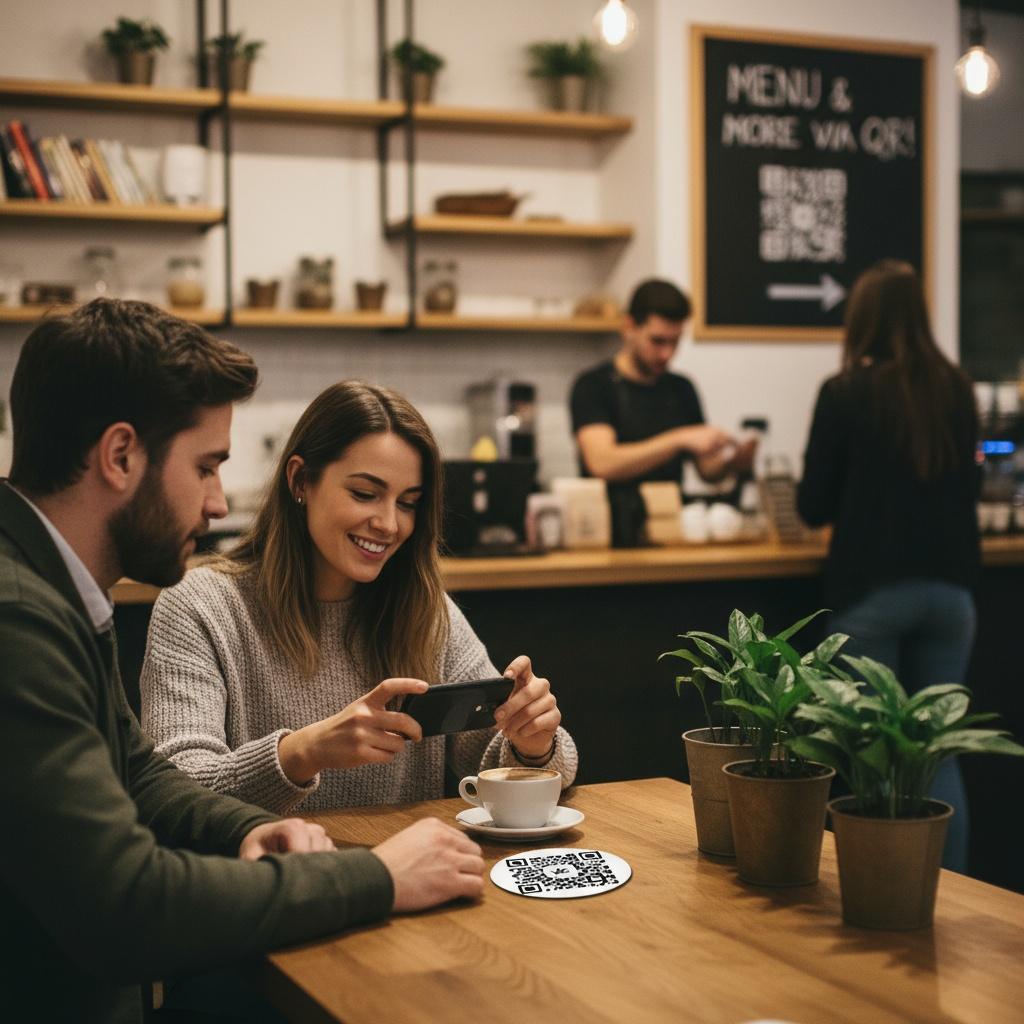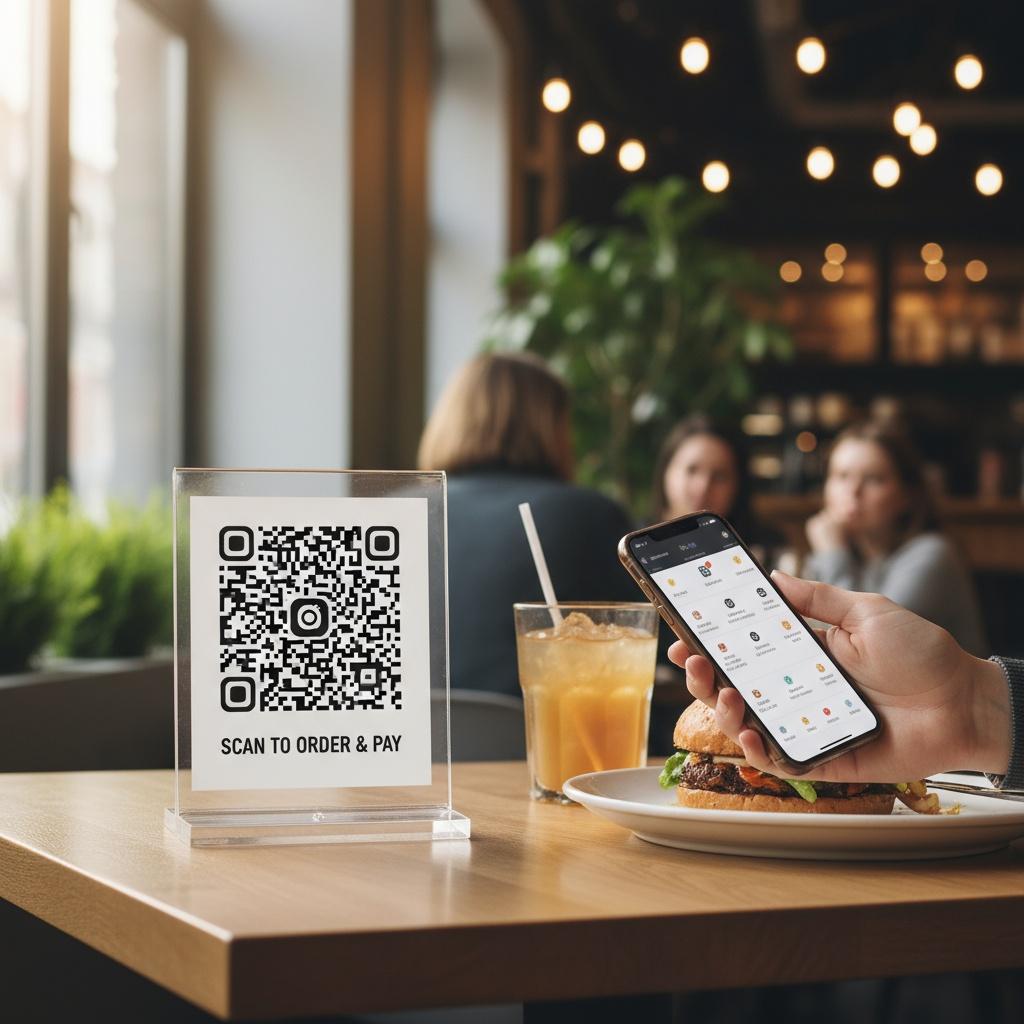

QR codes in business have evolved from novelty to necessity, enabling guests to browse menus, place orders, and pay without touching a terminal or waiting for staff. For operators, this simple square has become one of the most practical digital transformation tools: it removes friction at the point of decision, speeds table turns, and funnels real-time data into modern marketing strategies. When implemented with the right standards and signage, QR journeys feel intuitive, inclusive, and fast.
The typical flow is straightforward: a guest scans, lands on a mobile-optimized menu, customizes items, and completes checkout via card-on-file, wallet, or account-based payment. On the back end, orders route to the POS and kitchen, tips and taxes calculate automatically, and the receipt is delivered digitally. The same code can support ordering, reordering, and pay-at-table; dynamic codes even reflect table numbers or promotions, tying every visit to a single customer journey.
There are two dominant patterns. In consumer-presented flows, a shopper displays a code from their wallet app that the merchant scans; in merchant-presented flows, the business displays a code that the shopper scans to initiate ordering and payment. Both approaches are supported by global standards. For a high-level view of formats and interoperability, see the EMVCo overview of QR code payments. For process details on the wallet-driven model, review EMVCo guidance on consumer-presented QR codes.
QR ordering reduces wait times and frees staff for hospitality moments that matter, from greeting to upselling. Digital menus lift average check sizes with rich visuals, modifiers, and timely suggestions, while automated tab management and pay-at-table shrink the end-of-meal bottleneck. On the cost side, paper menus, receipt rolls, and extra handheld terminals fade, and error rates drop as guests confirm orders themselves. Together, these gains compound into quicker turns, higher revenue per labor hour, and measurable ROI.
Security isn’t just about the payment page; it starts with the code standard. Following recognized specifications helps ensure codes are readable across devices and wallets and that payment data flows securely. For a concise primer on code types and best practices, consult the EMVCo Quick Resource on QR Code Payments. Technical teams should align implementations with the EMVCo Specifications archive to support interoperability, reduce integration risk, and future-proof against ecosystem updates.
Start with a pilot: select a few locations or sections, define success metrics (QR adoption rate, checkout time, average check, order accuracy), and iterate weekly. Choose a provider that integrates with your POS and loyalty, supports dynamic codes, and offers branded, accessible UI. Design clear, on-brand signage; place codes where decisions are made (host stand, table tents, drive-thru, packaging). Train staff to introduce the option and provide a fallback for cash or card. Finally, monitor analytics and A/B test flows, promotions, and prompts to tip or join loyalty.
Dynamic QR codes can encode campaigns, locations, and tables, feeding granular attribution into your CDP. Tie scans to cart behavior to personalize recommendations, trigger one-to-one offers, and remarket to abandoned carts. Rotate seasonal bundles, swap hero images by daypart, and test copy that communicates speed and value. As digital transformation tools, QR experiences also unlock zero- and first-party data collection (with consent), enabling modern marketing strategies across email, SMS, and wallet passes without interrupting the guest experience.
QR codes for contactless ordering and payment are a lightweight, high-impact path to operational agility and revenue growth. By pairing standards-based implementation with thoughtful UX and data-driven optimization, businesses can deliver faster service, higher ticket sizes, and smarter marketing—all from a scan. Start small, measure what matters, and scale the experience that guests choose because it’s simply the most convenient way to order and pay.